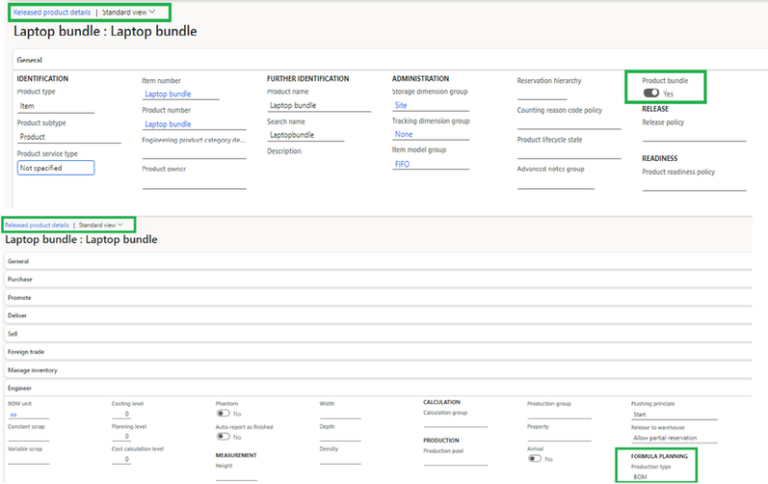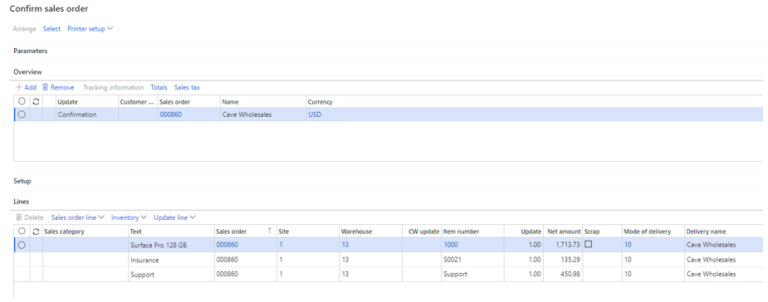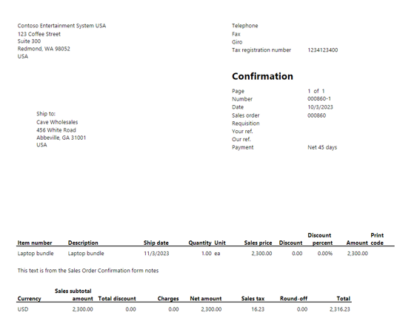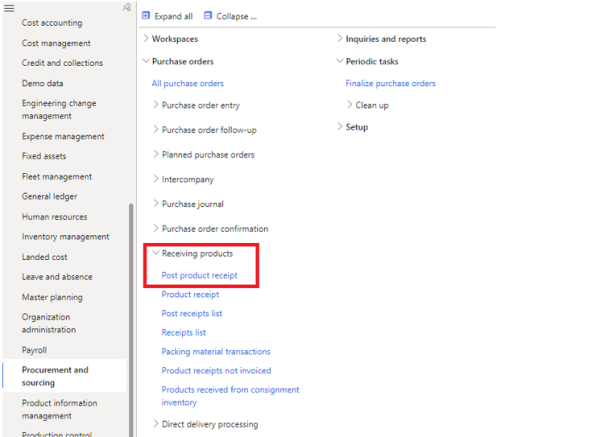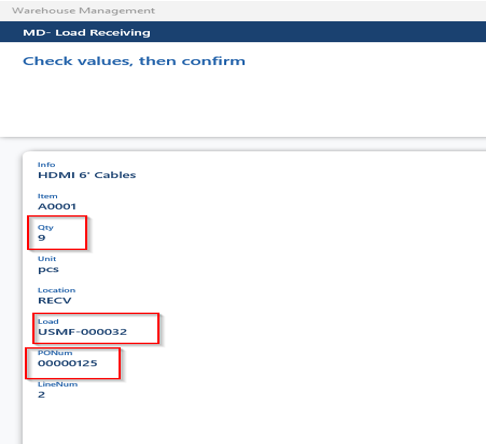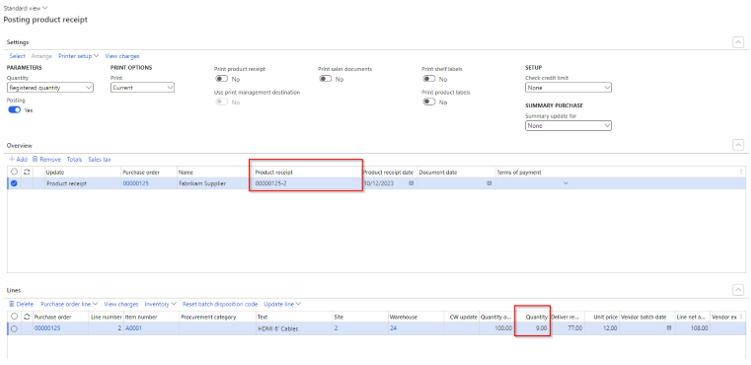Navigating the Dynamics 365 Transition: Anaxco's Journey to Operational Excellence with Companial's Support
Per saperne di piùWhat’s New in the 2023 Platform Updates for Microsoft Dynamics 365 Finance & Supply Chain Management: Release wave 2
Monday, October 23, 2023
Reading time: 7 minutes
In this blog post, we’ll dive deeper into the 2023 release wave 2 for Dynamics 365 Finance and Supply Chain Management. We’re here to keep you informed of the most significant recent releases and the exciting features on the horizon. Let’s explore what’s new and upcoming.

Inventory and Logistics
Feature: Sell and price multiple items as a bundle
There was a bundle feature as part of the revenue recognition module that was deprecated in April 2023. This product bundle feature replaces that old one. Microsoft have made this functionality a stand-alone feature which will be available from version 10.0.36.
A product bundle consists of two or more items that are sold and priced together. In short, using this feature will:
- Simplify order entry, no need to enter all components.
- Auto-allocate selling price from parent item to individual component items.
To set up the product bundle, there are two actions that need to be taken on the Released Product Form of the Product Information Management Module:
- On General FastTab, set the Product Bundle option to Yes.
- On Engineer FastTab, set the Production type field to BOM.
This feature uses the base sales price of each component item, in the released product form, to determine the allocation factor when the parent item’s unit price is allocated to the component items.
As mentioned earlier, to create the sales order, just the parent item needs to be manually entered. By confirming the SO, the parent item explodes into the component items automatically.
The details are shown in these two following pictures:
However, because the printed confirmation report is the external-facing document for the customer, it shows only the parent item of the product bundle, as shown in the following illustration.
The details of price allocation are clear in the following table:
Warehouse Management
Feature: Multiple product receipt postings per load
This feature was already available in the system, but now Microsoft has made it mandatory, as it is so useful in daily warehouse operations. This feature:
- Adds flexibility to the inbound load receiving process by allowing multiple product receipt postings for the same load.
- Allows warehouse managers to keep a load open even after running the product receipt posting job, thereby allowing additional registrations for the same load.
- Enables quantities to be registered and product receipts updated to the ledger.
- A purchase order is created and confirmed in the system including one line with the following details:
- Item Number = A0001, Quantity = 100 Pcs
- A load is created in the system for this purchase order.
- The truck arrives in the warehouse and the warehouse worker starts registering the item.
- The warehouse worker counts the items and registers quantity = 5 of item A0001.
- The warehouse inbound manager posts the product receipt of this registration, using the batch job or manually.
The posted receipt can be found on the product receipt form:
- Imagine that there were some quantities of this item at the back of the truck that were not registered by the warehouse worker. Using this feature, the worker could register the remaining pieces. In this case, a second product receipt is generated.
Posting second product receipt using the standard job in the path:
Procurement and Sourcing Module –> Receiving Products –> Post Product Receipt
Procurement
Feature: Inform vendors about when to ship items
Purchase orders in Dynamics 365 Supply Chain Management currently include a delivery date, which specifies when the order should be received at your company’s location. This feature adds a ship date, specifying the date the vendor should ship from their location.
The system calculates the ship date according to the new transportation days setup, which lets you define the number of days needed to transport items between a vendor’s location and your locations. When master planning suggests a date for placing a planned order, it will also consider the transportation days set up to help make sure the goods will arrive at your location on time
We hope that this blog has assisted you in exploring some of the recently introduced features that can enhance the success and efficiency of your business with Microsoft Dynamics 365 Finance and Supply Chain Management!
As you enjoy the benefits of these latest platform updates, remember to maintain the security and proper functioning of your system by subscribing to our Solution Maintenance service. Ensure that your solution remains up to date.
If you have any questions, please feel free to contact us via email at service@companial.com
With over 7 years of experience in Systems and Processes, Reza has a proven track record in Microsoft Dynamics AX 2012 | D365 F&SCM ERP implementation, particularly within the retail industry. Known as a visionary and strategic thinker in the ERP and digital transformation domain, his role typically revolves around tasks like requirement analysis, solution design, functional design preparation, implementation, testing, and support. Reza excels in various modules including Sales, Purchases, Project Management, Inventory and Warehouse Management, and Finances.
Ulteriori informazioni su Finance and Supply Chain Management
Running Dynamics 365 Finance & Supply Chain Management Data Export with Azure Data Lake V2 and Azure Synapse: Real-Life User Story
In this blog, we’ll explore the process of synchronizing data from Microsoft Dynamics 365 Finance & Supply Chain Management to ...
Per saperne di piùWhat’s New in the 2023 Platform Updates for Microsoft Dynamics 365 Finance & Supply Chain Management: Part 2
In this blog, we’ll provide you with a comprehensive overview of the upcoming and recently released improvements in Dynamics 365 ...
Per saperne di piùWhat’s New in the 2023 Platform Updates for Microsoft Dynamics 365 Finance & Supply Chain Management: Part 1
As Microsoft Dynamics 365 Finance and Supply Chain Management (previously known as Finance and Operations) receives 8 platform updates annually, ...
Per saperne di piùCatch the Momentum of “Bridge to the Cloud 2” Promotion: An Exclusive Opportunity to Migrate your Dynamics AX Customers to Dynamics 365 F&SCM Cloud
Are you looking to modernize your Dynamics AX customers’ business processes and take advantage of the latest Microsoft Dynamics 365 ...
Per saperne di piùEfima
Streamlining Efficiency: Companial's Expertise and Exceptional Service Save Time and Resources for Efima's Development Project
Per saperne di più